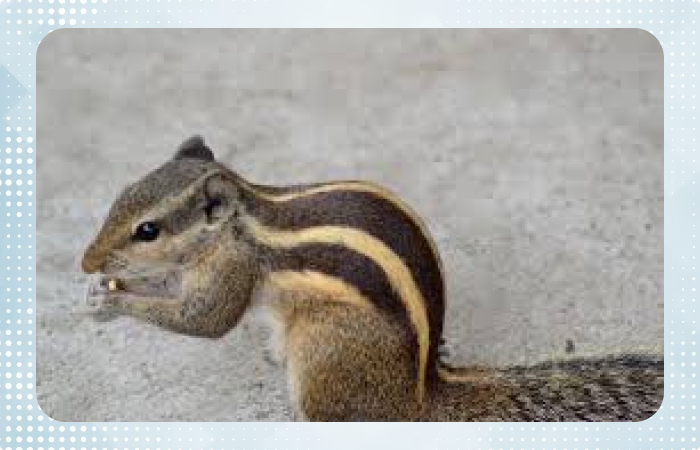
Indian Palm Squirrel
The palm squirrel is about the size of a large chipmunk, with a bushy tail slightly shorter than its body. The back is a grizzled, grey-brown colour with three conspicuous white stripes which run from head to tail. Eat mainly nuts and fruits. They are fairly vocal, with a cry that sounds like "chip chip chip" when danger is present. They are opportunists in urban areas, and can be easily tamed and trained to accept food from humans.
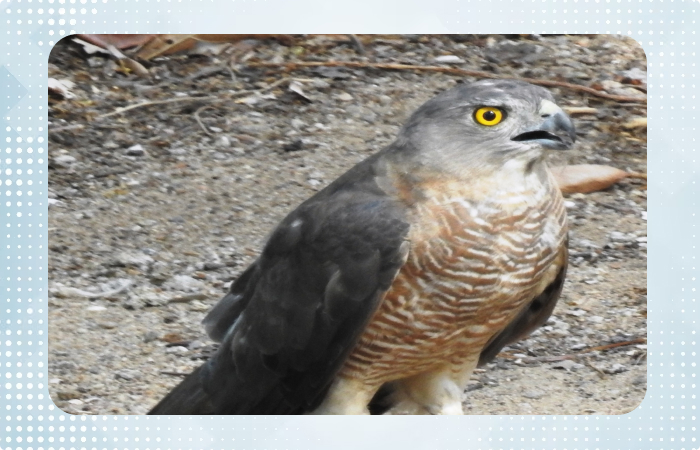
Shikra (Accipiter badius)
Shikra (Accipiter badius) predating upon Indian palm squirrel (Funambulus pulmarum) A small bird of prey in the family Accipitridae found widely distributed in Asia and Africa. They feed on rodents, squirrels, small birds, small reptiles and insects. They will descend to the ground to feast on emerging winged termites.
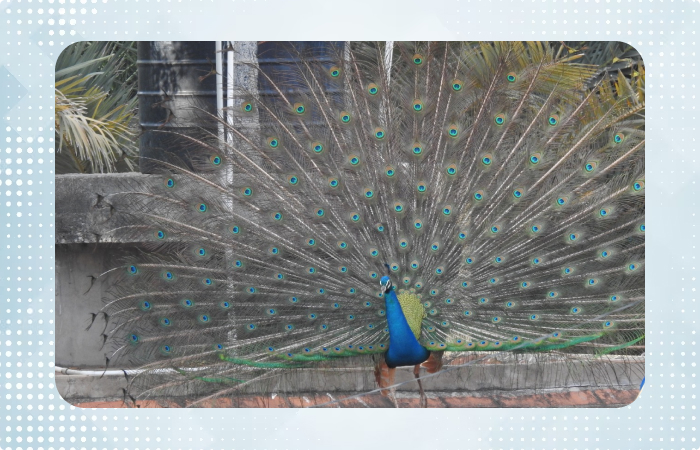
Indian Peafowl (Pavo cristatus)
A large and brightly coloured bird, native to the Indian subcontinent, but introduced in many other parts of the world. The male, or peacock, is predominantly blue with a fan-like crest of spatula-tipped wire-like feathers and best known for the long train made up of elongated upper tail covert feathers which bear colourful eyespots. The female, or peahens lack the train, and have a greenish lower neck and duller brown plumage.
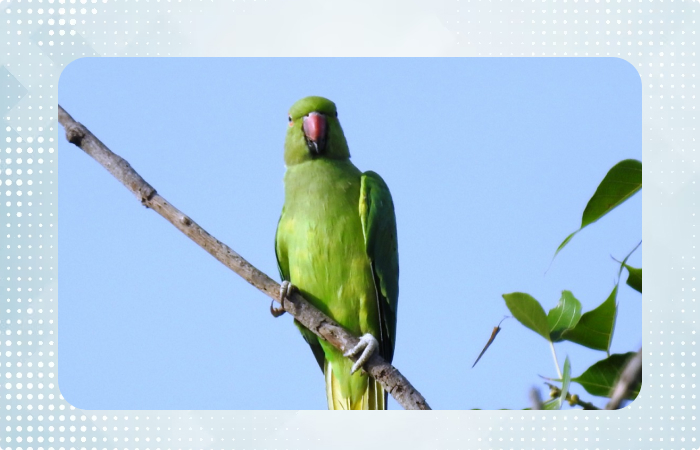
Rose-ringed Parakeet (Psittacula krameri)
A medium sized parakeet, native to Africa and South Asia, and is now introduced in many other parts of the world. Sexually dimorphic, the adult male sports a red and black neck ring, and the hen and immature birds of both sexes either show no neck rings, or display shadow-like pale to dark grey neck rings.
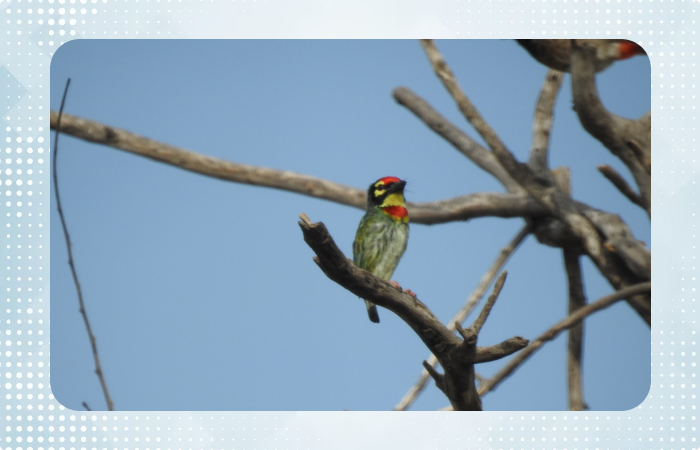
Coppersmith Barbet (Megalaima haemacephala)
A brightly coloured barbet, native to India and parts of Southeast Asia, and is known for its metronomic call that sounds similar to a coppersmith striking metal with a hammer. Similar to other barbets, they carve out a hole inside a tree to build their nest.
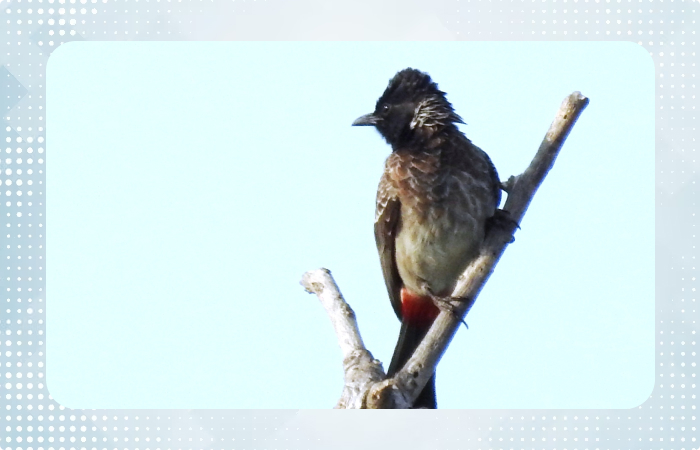
Red-vented Bulbul (Pycnonotus cafer)
A member of the bulbul family, has short crested black head, native to Indian subcontinent, and is now introduced in many other parts of the world. Feed on fruits, petals of flowers, nectar and insects.
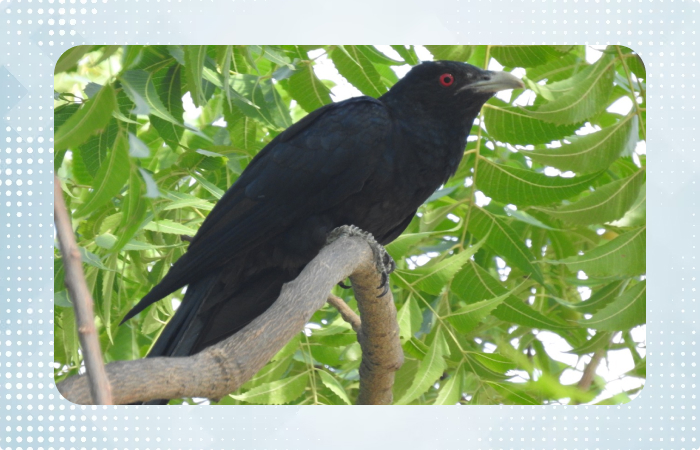
Asian Koel (Eudynamys scolopaceus)
A member of the cuckoo order of birds, native to Indian subcontinent and Southeast Asia, and is known for brood parasitism – unusual among the cuckoos in being largely frugivorous as adults.
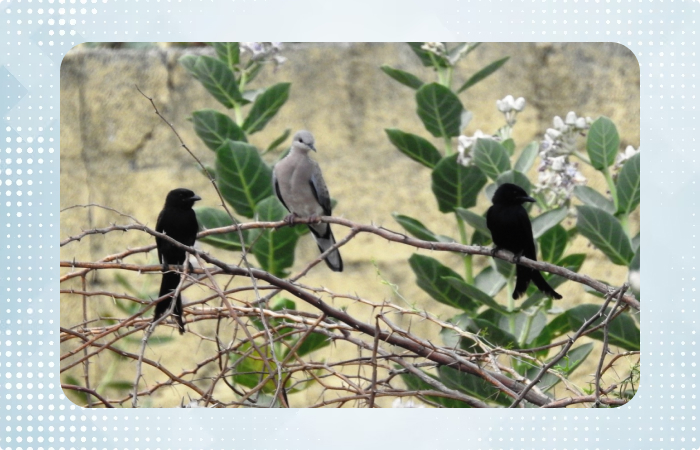
Spotted Dove (Spilopelia chinensis)
A small and somewhat long-tailed dove, is a common resident breeding bird across its native range on the Indian subcontinent and Southeast Asia, and is now introduced in many other parts of the world. Feed on grass seeds, grains, fallen fruits and seeds of other plants.
Black Drongo (Dicrurus macrocercus)
A small Asian passerine bird of the drongo family, common resident breeder in much of tropical southern Asia from southwest Iran through India and Sri Lanka east to southern China and Indonesia. Feeds on insects, and is common in open agricultural areas.
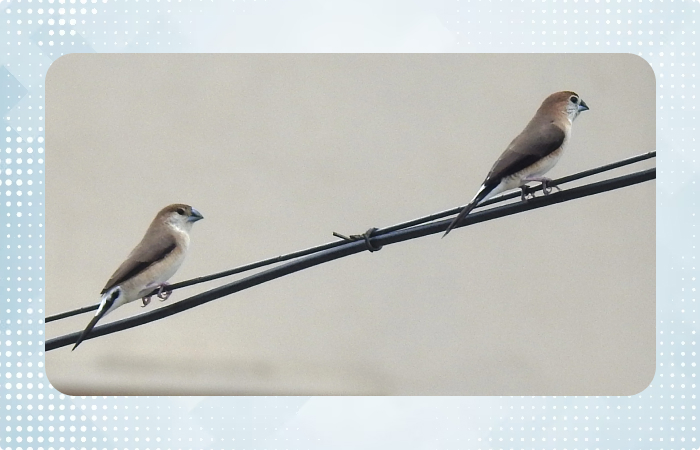
Indian Silver Bill or white-throated munia (Euodice malabarica)
A member of the cuckoo order of birds, native to Indian subcontinent and Southeast Asia, and is known for brood parasitism – unusual among the cuckoos in being largely frugivorous as adults.
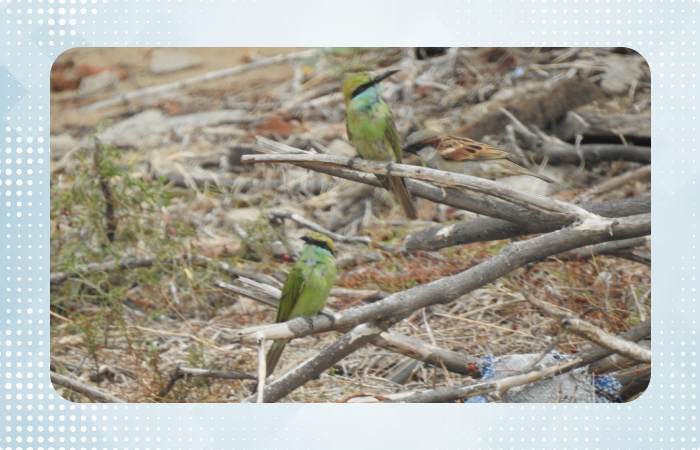
The green bee-eater (Merops orientalis)
A small and somewhat long-tailed dove, is a common resident breeding bird across its native range on the Indian subcontinent and Southeast Asia, and is now introduced in many other parts of the world. Feed on grass seeds, grains, fallen fruits and seeds of other plants.
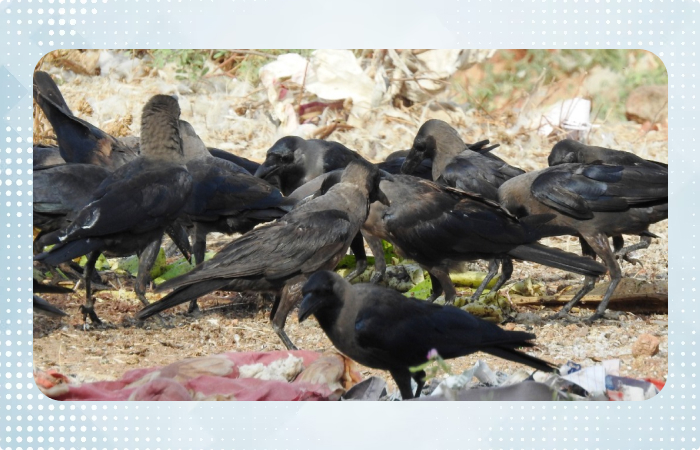
The house crow (Corvus splendens)
A common bird of the crow family that is of Asian origin but now found in many parts of the world, where they arrived assisted by shipping. The forehead, crown, throat and upper breast are a richly glossed black, whilst the neck and breast are a lighter grey-brown in colour. The wings, tail and legs are black. There are regional variations in the thickness of the bill and the depth of colour in areas of the plumage.
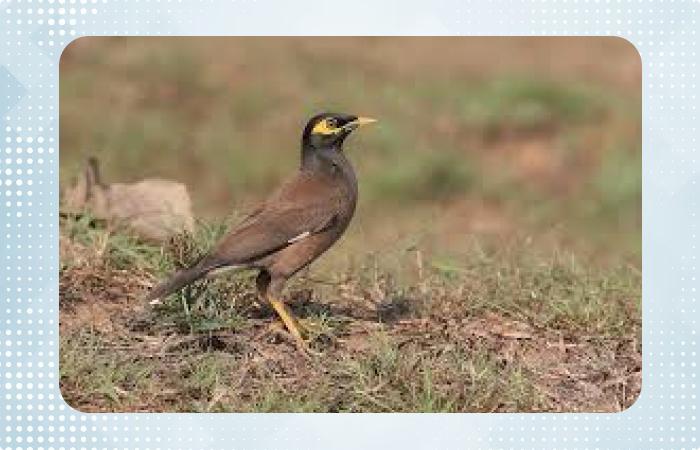
Common Myna (Acridotheres tristis)
A member of the family Sturnidae, native to Asia and is now introduced in many other parts of the world. An omnivorous open woodland bird with a strong territorial instinct, the myna has adapted extremely well to urban environments. One of the world's most invasive species and one of only three birds in the top 100 species that pose an impact to biodiversity, agriculture and human interests.

Fan-throated Lizard (Sitana sp.)
A genus of lizards, collectively known as the fan-throated lizards, from the family Agamidae. They are found in Nepal, India, Sri Lanka and Pakistan.

The house sparrow (Passer domesticus)
A small bird of the sparrow family Passeridae, found in most parts of the world. Females and young birds are coloured pale brown and grey, and males have brighter black, white, and brown markings. The house sparrow is native to most of Europe, the Mediterranean Basin, and a large part of Asia. The house sparrow is strongly associated with human habitation, and can live in urban or rural settings. It feeds mostly on the seeds of grains and weeds, but it is an opportunistic eater and commonly eats insects and many other foods.
